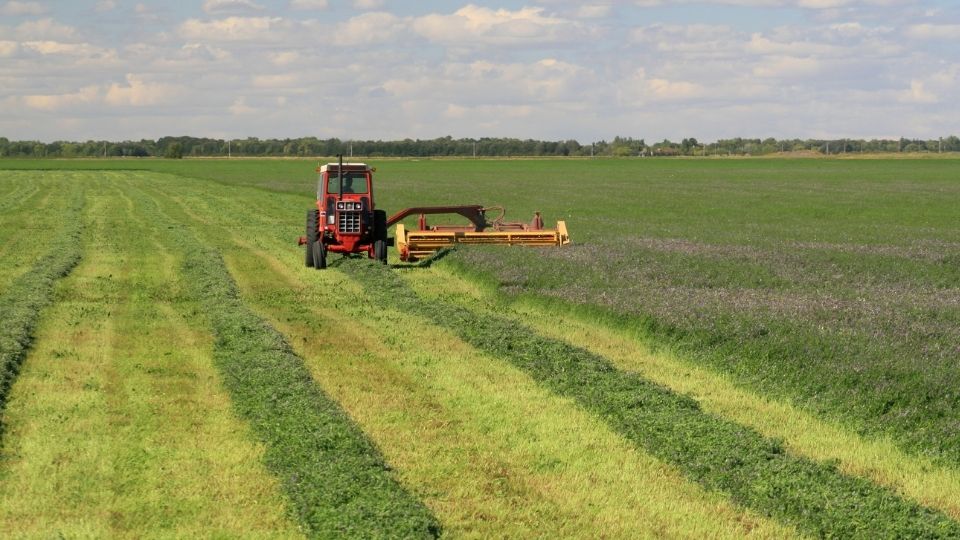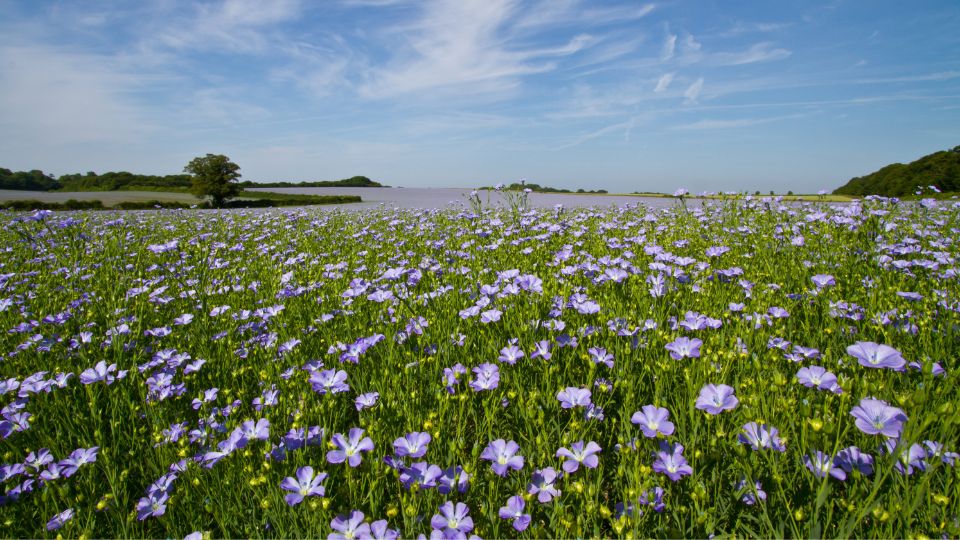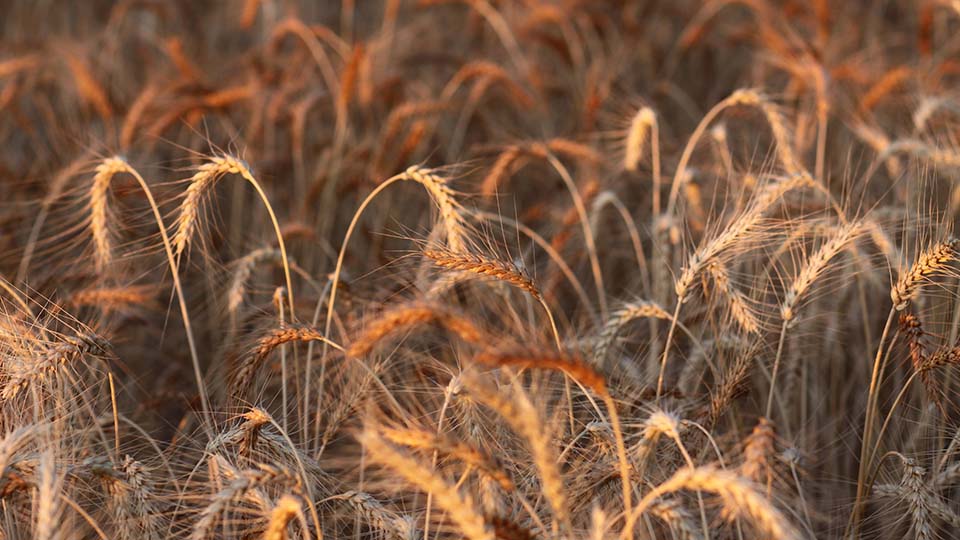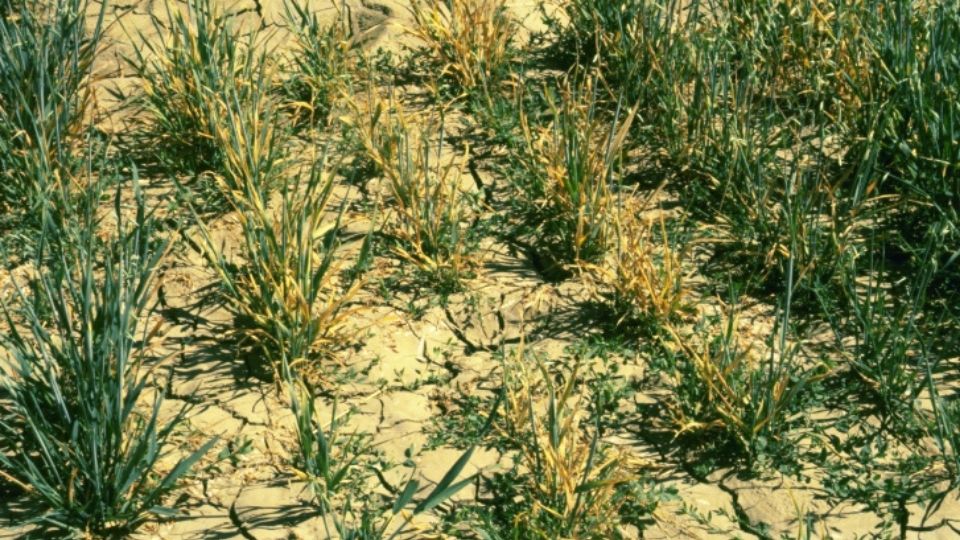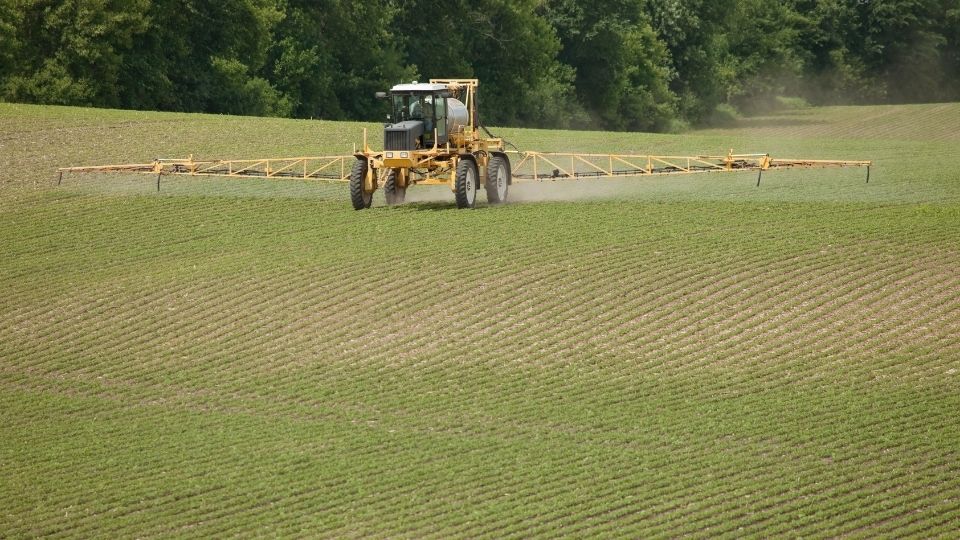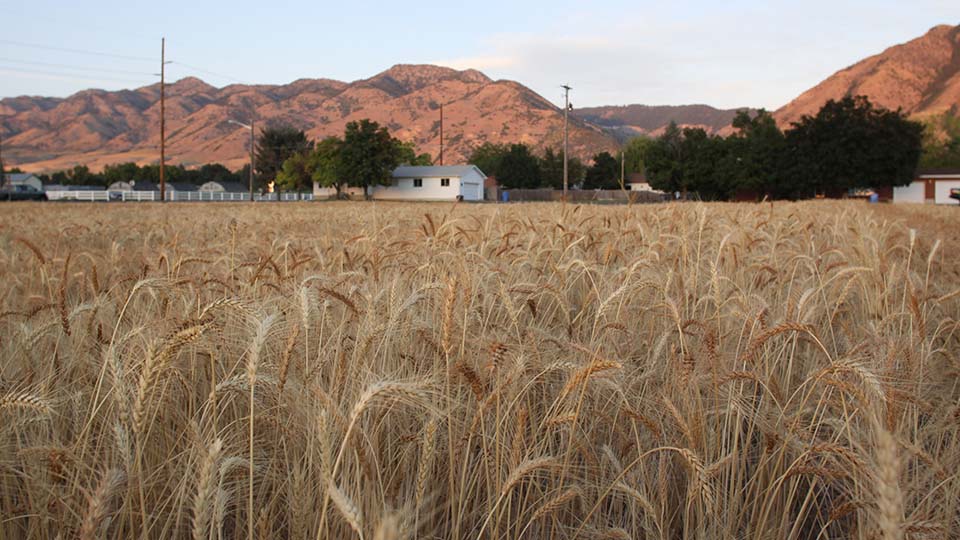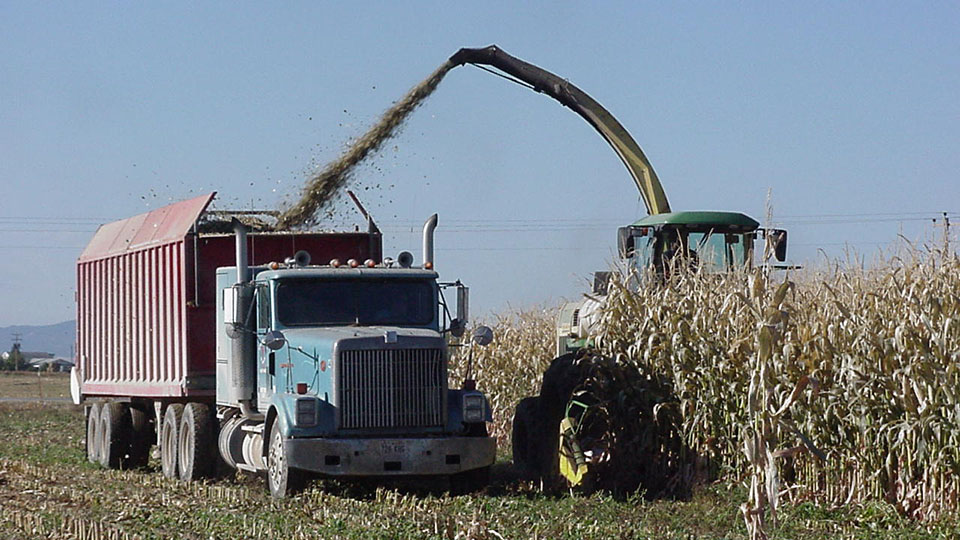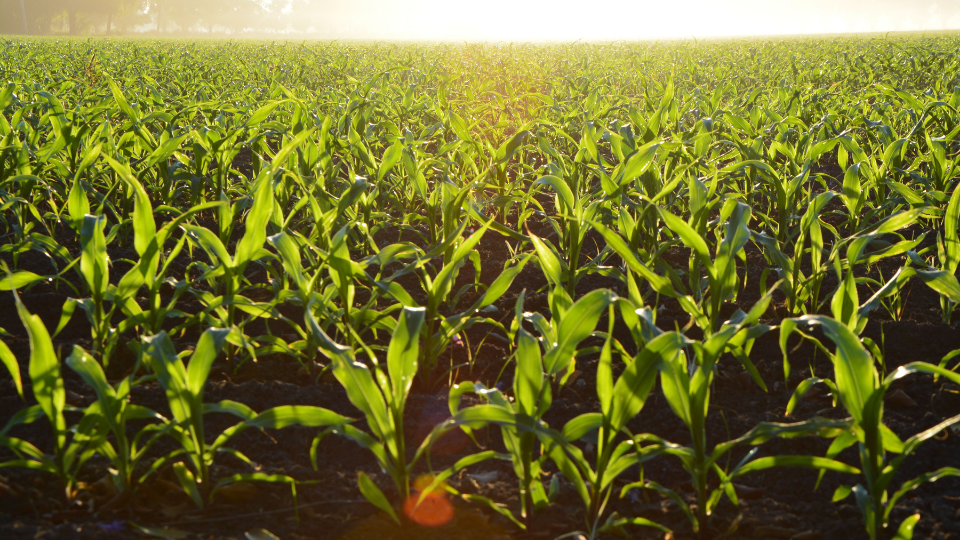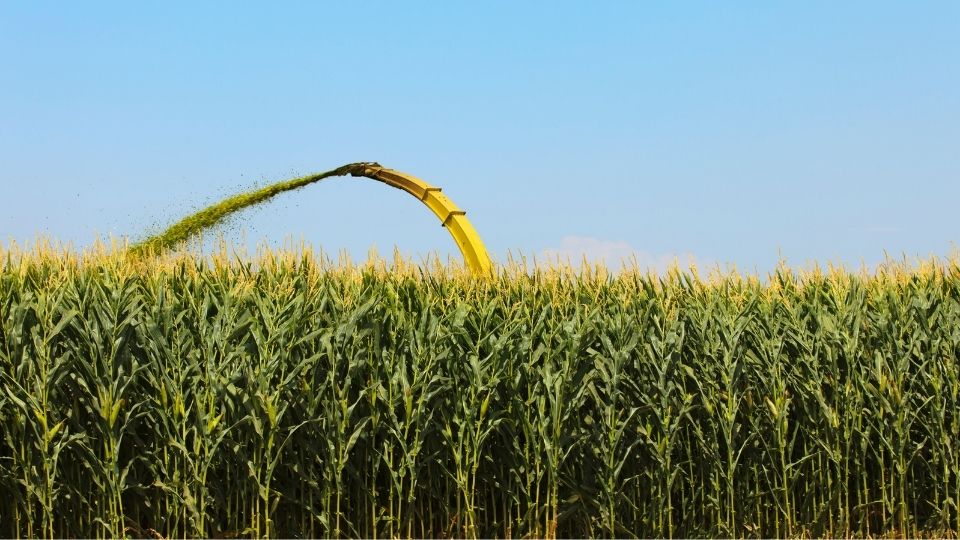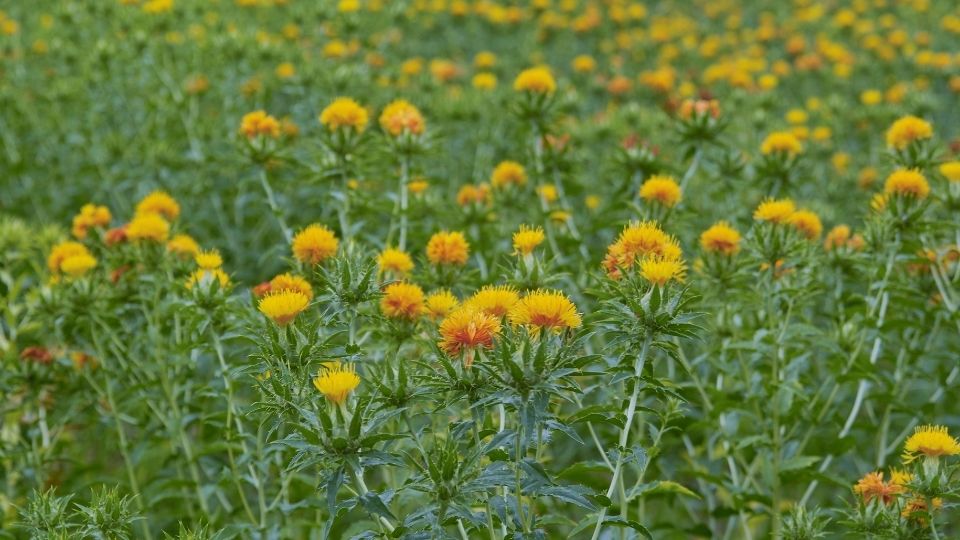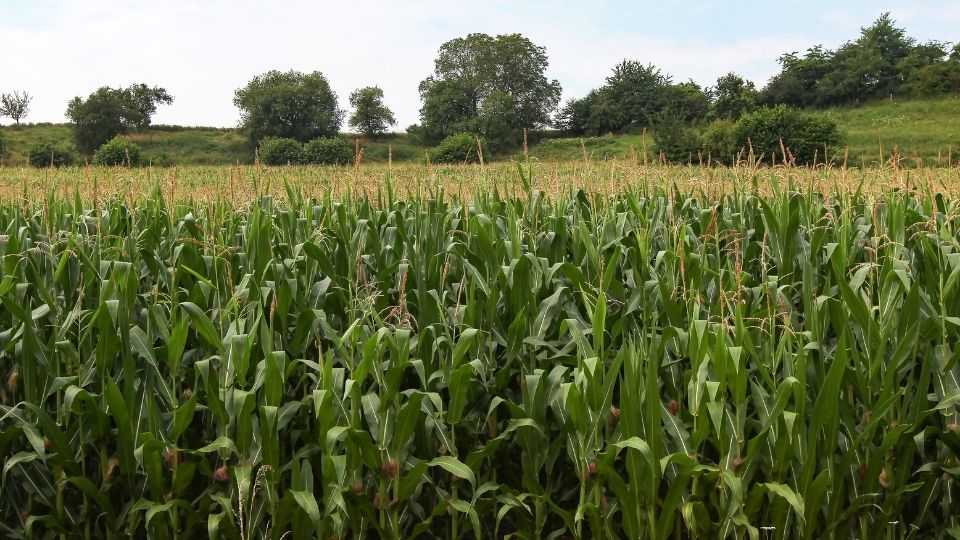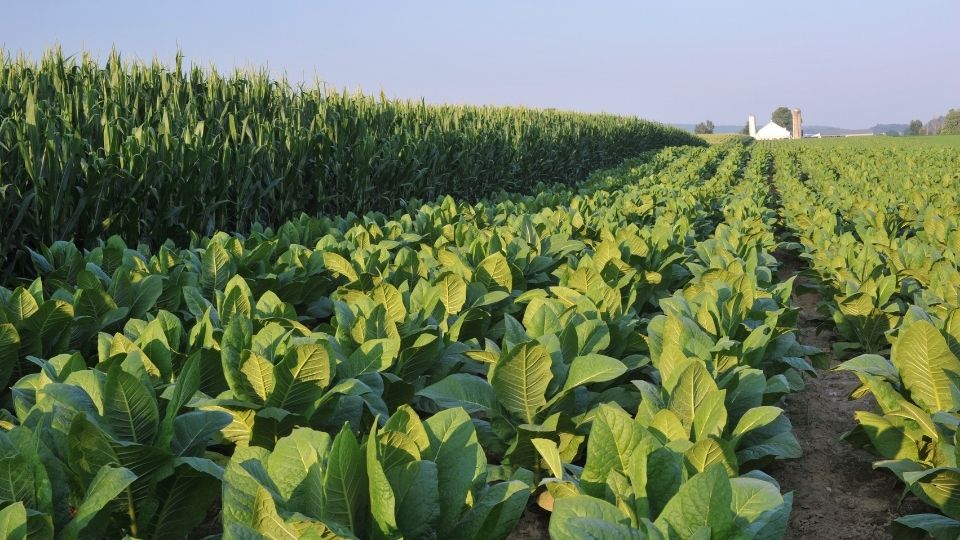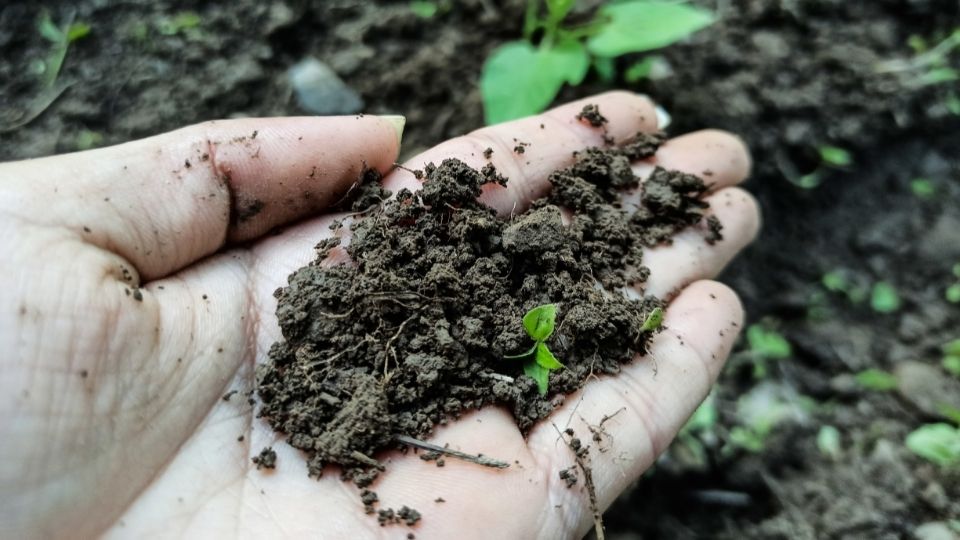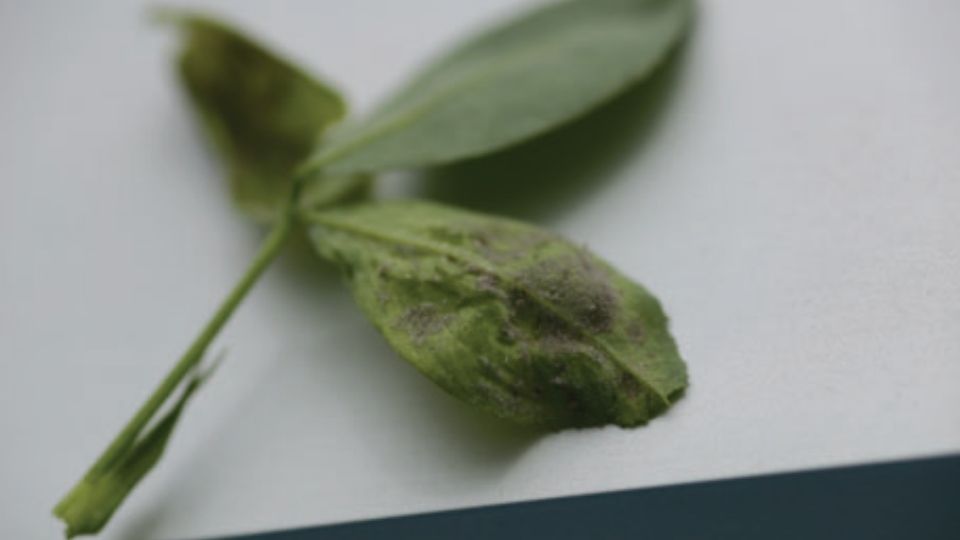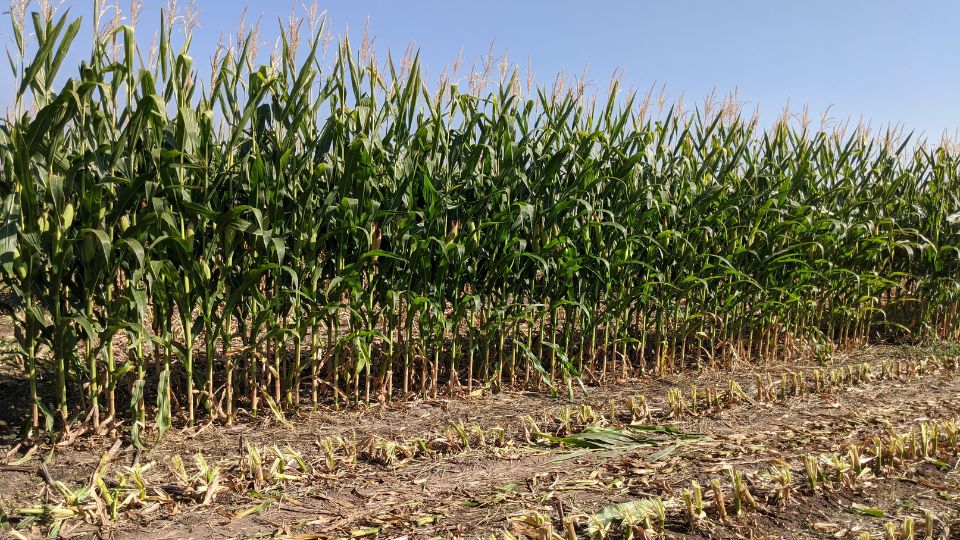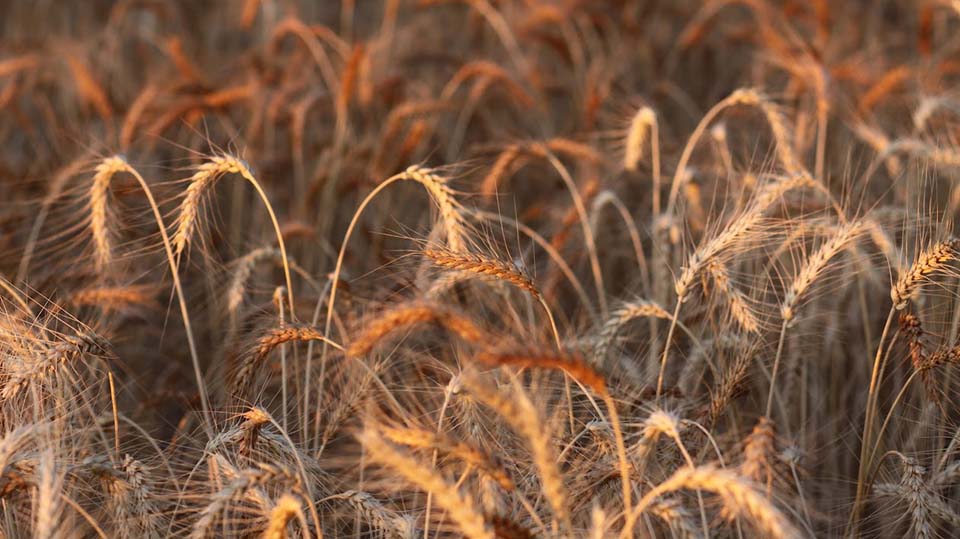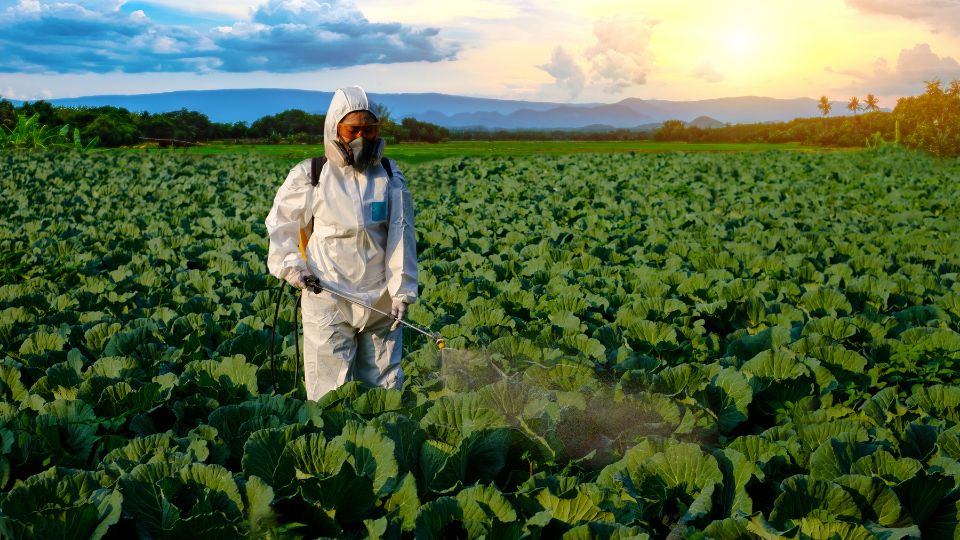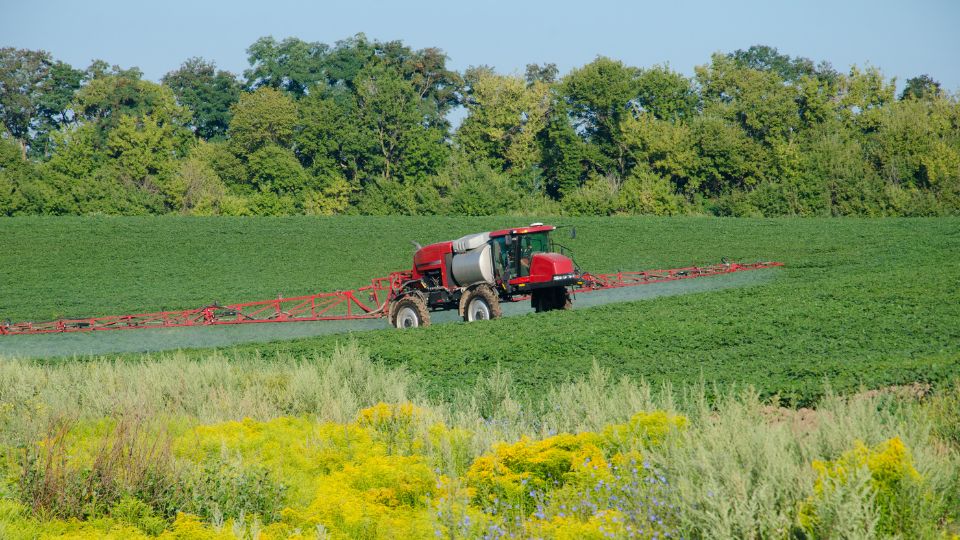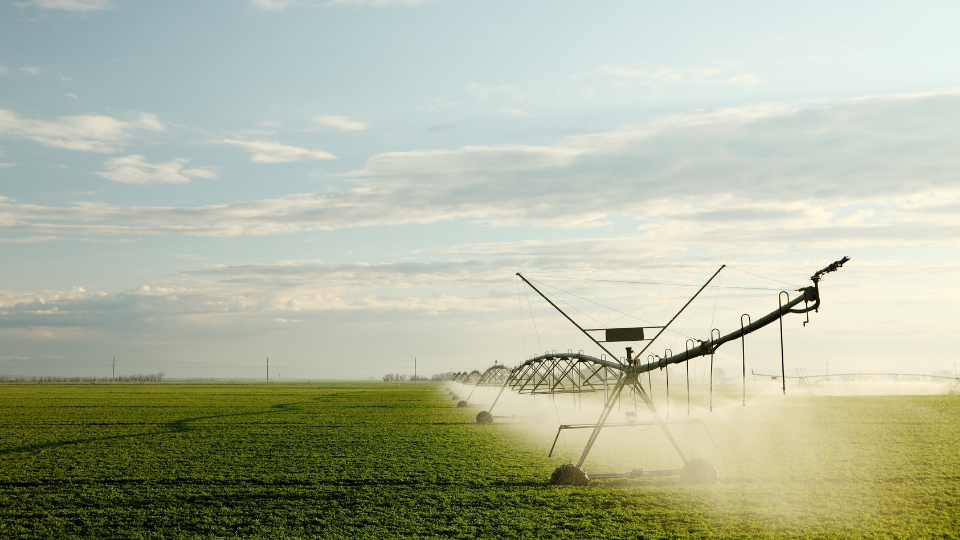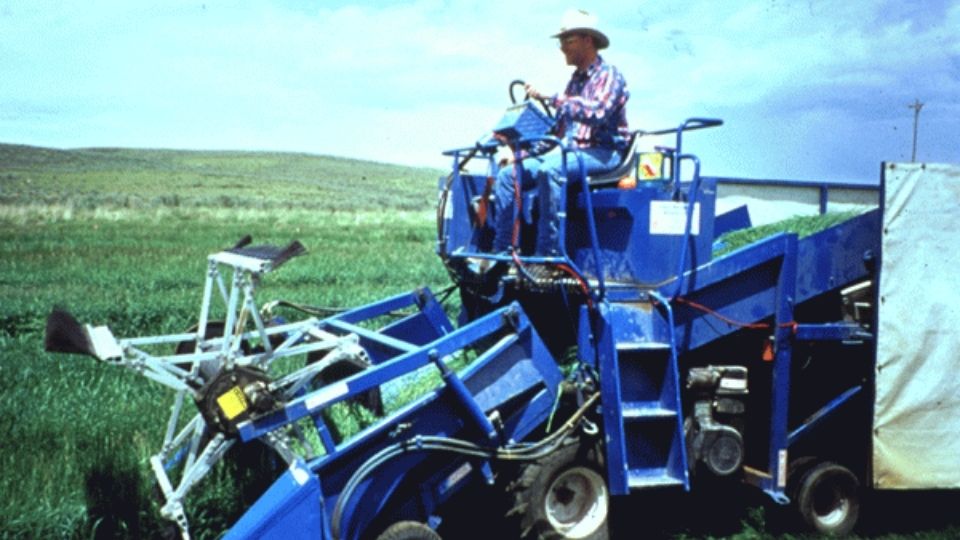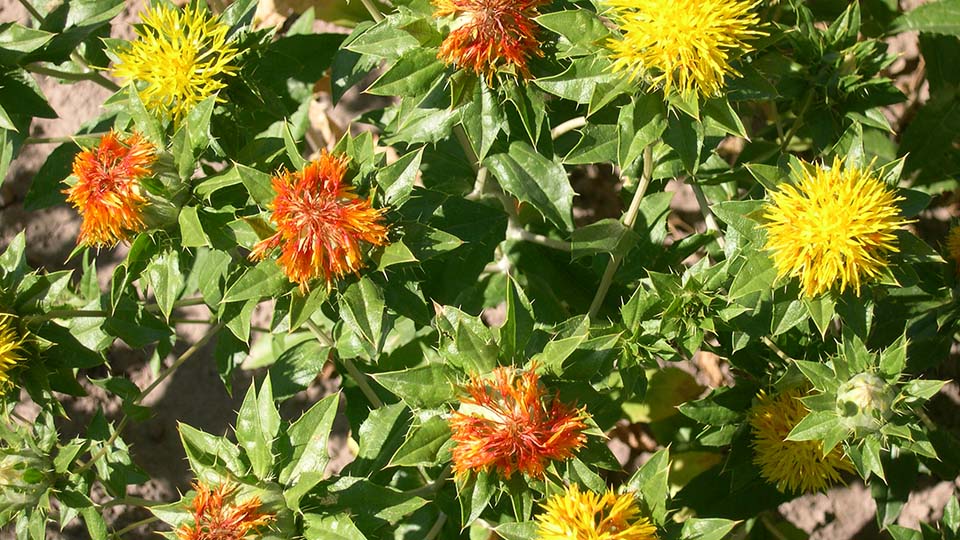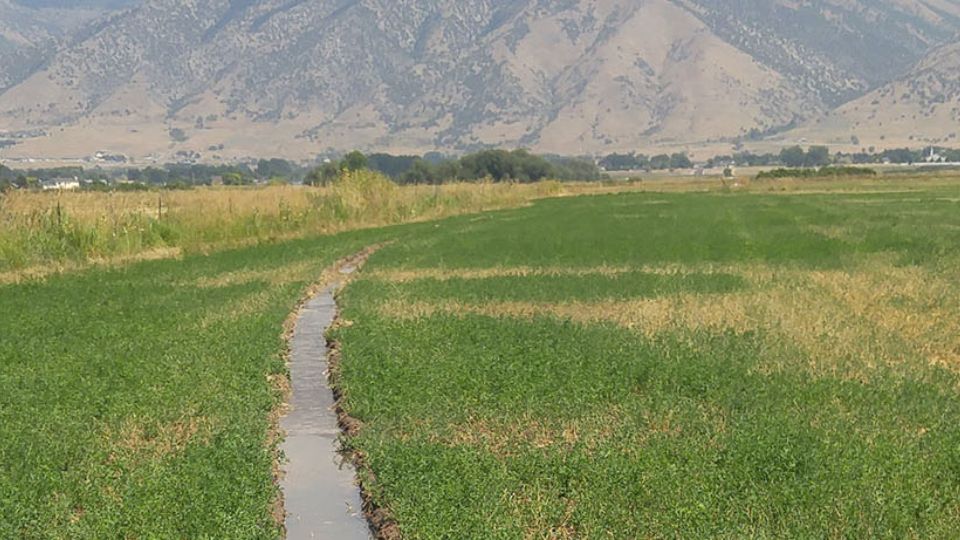Defense Against Drought

Drought History
Utah’s climate can often be harsh and unpredictable. As the nation’s second driest state, Utah is commonly subject to droughts. Extensive statewide droughts have often lasted 5 to 6 years. Figure 1 shows the drought history of Utah from 1895 to 2018 according to the Palmer Drought Severity Index. Negative values in yellow indicate drought conditions. Droughts usually cause severe crop and economic losses for farmers. For example, 1976 to 1979 drought conditions caused 40-100% crop loss in seven Utah Counties. During 1999 to 2004 drought has caused severe losses in agriculture of approximately $150 million (Utah Division of Water Resources, 2007). Droughts are extremely hard to predict. While modern science has made it possible to predict droughts about a month in advance, it is difficult to accurately predict droughts a year or more in advance or to predict the length of a drought (American Geosciences Institute, 2018). This uncertainty, especially in Utah where the weather conditions often change rapidly from one extreme to another, increases the drought-associated risk Utah farmers are facing. It imperative that farmers are well prepared to defend against drought to minimize risk and losses.
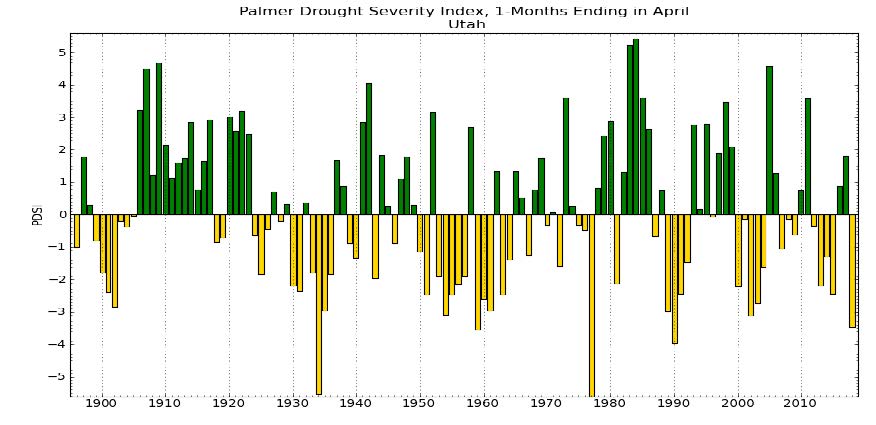
Figure 1 . The Palmer Drought Severity Index for Utah from 1895 to 2018 ( West Wide Drought Tracker, (n.d.)
Defense Against Drought
A large tool set exists for defending against drought. Six of many tools with potential to help prepare for and defend against drought are discussed below.
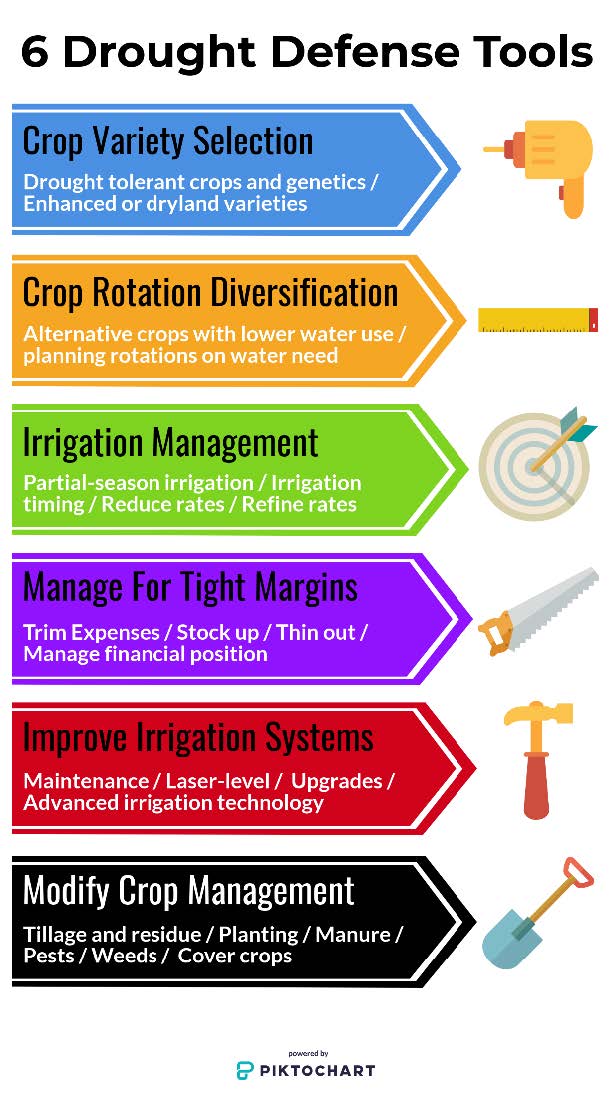
 1. Crop Variety Selection Alfalfa
1. Crop Variety Selection Alfalfa
Utah farmers grow more acres of alfalfa than any other crop. Alfalfa thrives in the state because of its relatively high drought tolerance. Its lengthy root systems can reach over 15 feet deep providing access to a greater soil volume to scavenge water. In extreme water-scarce environments, alfalfa plants have a unique ability to go into drought-induced dormancy. The plants break the induced dormancy and resume growth once the soil moisture returns to adequate levels. Still, with Utah’s extremely dry climate and droughts, there is a need to improve alfalfa’s drought tolerance. While alfalfa has not been genetically modified with drought tolerant traits, some varieties have been bred or selected for enhanced drought tolerance. Drought tolerance should be an important consideration when selecting an alfalfa variety. The level of drought tolerance primarily depends on two of the plant’s traits: the depth and size of its root system and the density of stomata or pores in the leaf epidermis (Quan et al., 2015). Alfalfa drought tolerance is not reported in alfalfa variety rating reports but the information on rooting depth can often be obtained from the seed producers. Selecting a variety that has been proven to perform well in your specific area is key. Consulting with the Extension personnel, other farmers, and local seed companies is advisable.
Small Grains – Wheat, barley, oats, and other small grain yields can be very negatively affected by drought. While wheat that has been genetically engineered with drought tolerant traits is not yet available to farmers, there are drought tolerant and dryland varieties of wheat that have been developed through conventional plant breeding. When there is a risk of drought conditions, wheat varieties should be selected with drought tolerance in mind.
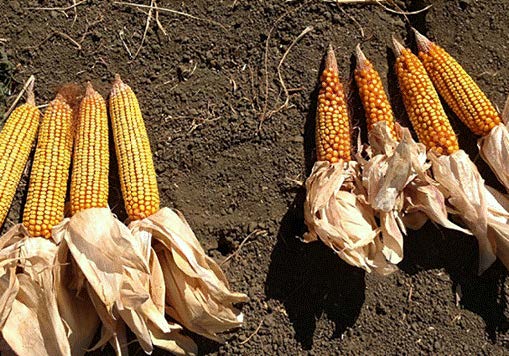
Corn – In Utah all corn production requires irrigation since rainfall during the growing season falls far short of the average 20 to 25 inches of moisture necessary to optimize corn yields. Expected water supply and timing of availability should be considered before planting corn to ensure the plants can reach maturity. If water availability is uncertain or water may not be available through the whole growing season, producers in Utah should consider other cropping options. When planting corn, selecting appropriate hybrids is crucial. For example, shorter day corn that matures quicker can be planted in cases where water may not be available toward the end of the growing season. In Utah, corn is a major crop that has available genetically modified drought tolerance traits. These traits allow the corn plants to grow normally under good conditions and enhances the growth rate of plants under drought stress conditions (DiLeo, 2012). Figure 2 compares corn plants with a genetically modified drought tolerance trait (on the left) and corn without the trait (on the right) during a short drought period. It is important to point out that drought tolerance traits may not help in extended drought conditions. Furthermore, even with short-term water stress, drought tolerance traits do not ensure yields equal to conditions with adequate moisture. However, the drought tolerant varieties can give Utah corn producers an advantage in years where interruptions in water availability are expected.
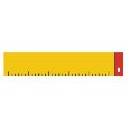 2. Crop Rotation Diversification
2. Crop Rotation Diversification
Crop diversification can be a great tool for managing production risks such as drought. There are several crops that could be used as alternatives to help diversify crop portfolios in Utah. Some of these include teff, forage soybean, sorghum, sorghum-sudangrass, grain sorghum, pearl millet, triticale, and safflower. There are several factors to consider when choosing alternative crops. Typical water use is an important consideration in crop selection during drought. For example, forage soybeans require irrigation throughout the whole growing season; triticale, if planted in late fall or spring, only requires water in the spring; and safflower is typically a dryland crop not requiring irrigation. The alternative crop’s economics such as production costs, harvesting costs, and market access must be considered. It is often most profitable to grow crops that can be managed with the existing equipment. For example, if you are an alfalfa hay producer you could use the same equipment to grow teff hay. The crop’s growth characteristics such as days to maturity, cold hardiness, soil fertility requirements, and many other factors all need to be examined as well. Extension personnel can provide more information on the most appropriate alternative crops for the specific area.
 3. Irrigation Management
3. Irrigation Management
Drought affects crop production/yield differently depending on the growth stage during which the water limitation has occurred. If full-season irrigation is not possible during drought, available irrigation water should be dedicated to the most productive land first; irrigation events should be timed to coincide with growth stages with the highest water demand and/or greatest effect on yield. For cereals grown for grain, irrigation during the period from tillering to bloom is most important. For cereals grown for forage, sufficient irrigation is especially important during the vegetative growth early in the growing season (Schneekloth et al., 2009). Critical irrigation periods for corn grown for grain, earlage, and silage are during the reproductive stages of growth (tasseling to grain fill), because all three harvest types are heavily influenced by grain yield. Alfalfa and pastures are typically much more drought tolerant than grain crops. During drought, irrigation should be concentrated to the early part of the growing season when water supply is more abundant, and the largest forage yield gains can be achieved. According to research in Colorado, terminating irrigation after the first or second cut of alfalfa generally has no impact on alfalfa performance in subsequent years (Lindenmayer et al., 2011). It is advisable to terminate irrigation to alfalfa at an appropriate time rather than severely under-irrigate throughout the whole growing season. Pastures with cool season grasses also usually tolerate shortseason irrigations quite well.
A few other ways to stretch the limited water supplies during drought include: 1) slightly underirrigating all season to improve irrigation use efficiency (the amount of yield per unit of water applied); 2) refining irrigation rates and schedules to match soil intake rates and crop demands; and 3) improving irrigation application efficiency by replacing worn and/or upgrading to new irrigation equipment (discussed below). These strategies can be quite sophisticated and will be discussed in greater detail in forthcoming factsheets.
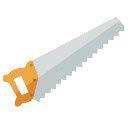 4. Manage for Tight Margins
4. Manage for Tight Margins
Trim expenses. The margins for returns to crop production tighten when drought occurs. To help alleviate tight margins, consider trimming expenses, wherever possible. This could include delaying phosphorus and potassium fertilizer buildups and reducing nitrogen applications to account for residual nitrogen that are typically higher during drought. It could also include reducing or eliminating other non-essential inputs such as some starter fertilizers, fungicides, micronutrient fertilizers, and various other products. The key is to reduce or eliminate inputs that provide minimal yield gains. Finally, consider postponing any non-urgent expenses and capital improvements.
Stock up and/or thin out: Another way to manage for tight margins is to stock up and/or thin out. This might include purchasing inputs and feed in advance if possible and economical. Drought often causes crop shortages that can result in increases in commodity and feed prices. This includes drought in the Intermountain West and other parts of the country. For example, the widespread drought of 2012 caused rapid increases in nationwide corn and soybean prices. Another consideration is herd size for livestock producers. Ranchers may consider reducing their herd size if the water and forage needs cannot be met due to water shortage. Finally, concentrate on outputs that can do exceptionally well in droughts to capitalize on inflated prices from crop shortages.
Manage financial position: The results of drought conditions often lead to weakening of financial conditions. Working capital could be used up because of shortfalls in production. Overall debt levels could be increased because of shortfall in paying current debt obligations. This would weaken the overall financial position of an operation. The best method to protect your operation is to strengthen your financial position during strong years. Building up working capital, paying down debt, and steady growth versus large expansions will help your operation be prepared for changing financial conditions.
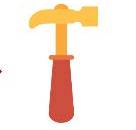 5. Expand / Improve Irrigation Systems
5. Expand / Improve Irrigation Systems
Detailing all possible expansions and improvements in irrigation systems is not the intent of this discussion. Rather, a few considerations for each type of irrigation system is suggested.
Flood and furrow: While typical efficiency for flood and furrow irrigation systems range from 40% to 80%, some management practices can help improve water use efficiency. Cleaning out the ditches and removing any obstructions helps to reduce evaporation. Lining the ditches with cement or plastic helps to prevent water losses due to leaching. Decreasing the length of the flooded fields can improve water efficiency. Laser-leveling helps to conserve irrigation water, nutrients, and ag chemicals and ensures uniform applications throughout the whole field. Data collected from Arizona fields showed that fields that were laserleveled used 30% less water. Irrigation efficiencies on the flood and furrow irrigated land increased from a typical 50-65% to 80% when laser-leveled (Daubert et al., 1982). Laser-leveling can be costly, with the initial laser-leveling costing between $150 to $600 per acre (depending on how much soil must be moved), and the annual maintenance laserleveling costing under $50 per acre depending on the size and condition of the field (Land Leveling, 2013). Figure 3 shows the equipment used for laserleveling a field prior to irrigating.

Hand line and wheel line: Wheel line, hand lines, and other similar irrigation systems typically have application efficiencies between 60% and 85% (Harms, 2011). Timely maintenance and proper operation are key to ensuring the maximum efficiency. The delivery ditches and pipelines must be regularly inspected to ensure that all debris has been removed and that there are no leaks. The risers must be sealed properly to eliminate leaks. The riser caps and valve stems have to be replaced regularly or as soon as they begin to leak. All leaks must be repaired throughout the sprinkler pipes and all joints, hoses and swing lines must be properly sealed. Drains must be working properly on wheel lines and not leaking once the sprinkler has been primed. All sprinklers should be in proper working condition. Nozzles should be replaced every 2 to 5 years and sprinklers every 6 to 8 years to account for wear and tear (Peters, n.d.). A 3/16” or similar sized nozzle is typically used in Utah and proper pressure should be maintained to ensure irrigation uniformity (Hill, 2000). Using the correct pump size is important to ensure the proper flow and head at a high efficiency. Finally, the irrigation schedule (12 vs. 24 hour sets) and nozzle size must match the sprinkler design.
Pivots and linear (or laterals):
Maintenance. Pivots and linears are growing in popularity in Utah because of their higher efficiency, and labor, and energy savings. Pivots and linears typically have application efficiencies between 75% and 90% (Harms, 2011). Maintenance is key to ensure maximum efficiency with these irrigation systems. All leaks should be fixed immediately. Nozzles can become worn so that water is no longer distributed uniformly and in the correct amounts. Nozzles should be replaced according to manufacturer’s recommendations. Systems with dirty water containing debris, sand, or chemicals require more frequent nozzle replacements. Correct nozzle size is important, taking into consideration that nozzle size should be increased along the pivot. Nozzles may also become plugged with debris and should be checked on a regular basis. Many pivots/linears are equipped with screens to prevent debris from entering the system. These screens should be checked regularly and cleaned as needed. End guns on pivots are much less efficient than irrigation between the pivot towers. End guns typical efficiencies range between 55% and 75% (Harms, 2011). Strong winds common in Utah tend to blow the irrigation water from the end gun far from its intended target with much of it being lost to evaporation.

Systems. The improved efficiency pivot packages such as LESA (Low Elevation Sprinkler Application), LEPA (Low Energy Precision Application), and mobile drip irrigation are available to growers. These types of systems can increase the efficiency to 95% or greater (Harms, 2011). LESA and LEPA systems require doubling or tripling the number of sprinklers on a pivot/linear. LESA systems have long dropped hoses with the sprinkler head less than 3 feet above the ground. This helps prevent losses due to wind and evaporation. LEPA systems are also lowelevation sprinklers often installed at 18 inches above the ground. LEPA systems use low pressure and allow the water to fall to the ground in bigger drops. This further reduces losses to wind and evaporation. Mobile drip irrigation systems have drip hoses that are attached to the pivot/linear. The pivot/linear drag these across the field applying the water directly to the ground further minimizing losses (Figure 4). Several research trials are being conducted in Utah to assess the impacts of these systems on water use, crop production, and profit. Results will be presented in future publications.

Irrigation system upgrades or rental: The decision to upgrade an irrigation system is complex and should involve the consideration of water availability, pumping cost, labor cost, technical experience, fuel cost, tax rates, soil types, topography, etc. Consulting with Extension personnel, irrigation companies and other professionals to explore the available options for irrigation system upgrades is recommended. Several calculators are available that allow growers to explore various configurations and options for irrigation systems. When selecting upgrades, it is advised to use caution and make sure they are economically and agronomically feasible for any specific operation. Figure 5 shows the approximate efficiency of different types of available irrigation systems.
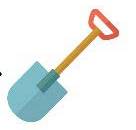 6. Modify crop management
6. Modify crop management
Tillage and residue management. Tillage and residue management practices can be adjusted to help increase and conserve soil moisture. Reducing or eliminating tillage and leaving as much residue on the surface as possible, helps to build soil organic matter, reduce wind velocity at the soil surface, reduce evaporation, reduce runoff, increase infiltration, reduce soil temperatures, and improve snow trapping. An experiment conducted in Akron, Colorado, showed that water losses were 1.5 times greater on bare soil than soils with 3,000 pounds of wheat straw per acre covering the ground (Schiffner, 2012). Furthermore, 1% increases in soil organic matter will help some soils hold approximately 0.75 more inch of water per acre (Bryant, 2016).
Planting. Considering snowpack and anticipated water supplies early in the season, when making planting decisions, is important. In some cases, the planting time can be adjusted to capture residual soil moisture or timely spring rainfall. In preparations for expected droughts, growers may also consider reducing plant populations to reduce water demand and minimize seed costs.
Manure Management. Proper manure applications helps to increase the organic matter in the soil which, in turn, increases the soil capacity to retain water and nutrients during drought. Manure can be either surface applied and incorporated into the soil or injected into the ground as liquid manure. Manure injection is not as common as broadcast applications in Utah but may be an effective way to apply manure while reducing tillage to conserve soil moisture losses. Soil testing previously manured fields is required to properly account for nutrient availability and needs and, potentially, save on fertilizer costs.
Pest Management. Three of the main pests in agriculture are weeds, arthropods (insects and mites), and disease. Integrated Pest Management (IPM) programs are a great tool to fight pests during a drought. IPM programs focus on prevention of pests, monitoring pest levels, and use multiple types of management strategies, such as cultural and biological controls, besides relying on only pesticide use. An IPM approach can often be more affordable than pesticide applications alone.
Weeds can often extract water in greater amounts per unit of dry matter than field crops, which becomes particularly problematic during drought conditions. Avoiding excessive tillage and using sweep tillage tools and other reduced tillage practices to preserve residue and soil moisture are good options. Herbicides can help conserve soil moisture. Drought conditions can affect herbicide performance. For example, dust present on weeds reduces glyphosate uptake and effectiveness. Applying herbicides after a rain or an irrigation event helps to eliminate this problem. Droughtstressed weeds are generally less susceptible to herbicides. The addition of highly active surfactant, like a Methylated Seed Oil, can be used in some instances to increase herbicide uptake, and instructions are included on many herbicide labels addressing this situation. It is also important to recognize that preemergence herbicide activity is dependent on moisture for incorporation and activation. After preemergence applications, it may be necessary to apply irrigation to incorporate the herbicide if substantial rainfall does not occur shortly after application.
Drought-stressed plants can be more susceptible to damage from arthropods and/or disease. Selecting crop varieties that are resistant to arthropods and diseases common in a specific area can alleviate pest pressure. Monitoring for both diseases and insects is extremely important during droughts to ensure quick responses and pesticide applications at the proper time to help prevent further losses. For specific pests and their management like spider mites in corn (Ruckett and Ramirez, 2015), aphids in small grains (Hodgson and Karren, 2005), see references and/or visit utahpests.usu.edu.
Cover Crops. Cover crops can be used to help improve infiltration by reducing the sealing and crusting of bare soil surfaces. They can also help reduce evaporation if residue is left on the surface and not incorporated. Although cover crops can help conserve soil moisture, most will use water that might otherwise be available to the cash crop. Thus, they may not be options during drought conditions, but could be effective ways to build soils during non-drought years to help improve drought resiliency. More research is being conducted on these tradeoffs between water use by a cover crop and longer-term soil benefits.
Summary
Drought always has and always will impact Utah agriculture, and the occurrence and impacts of drought will likely increase in the future. Some effects of drought cannot be avoided, but utilizing combinations of the above six tools and others should help alleviate some of the negative impacts of drought and help improve returns to crop production in the state. The time to invest in drought defensive practices may not be during the drought when profit margins are tight. A better strategy may be to prepare for drought years by investing in improvements during good years. For more information, please contact local or state Extension personnel.
References
- American Geosciences Institute. 2018. Can Droughts Be Predicted? Available at https://www.americangeosciences.org/criticalissues/faq/can-droughts-be-predicted (verified 30 November 2018).
- Bryant, L. 2016. Organic Matter Can Improve Your Soil's Water Holding Capacity. NRDC. Available at: https://www.nrdc.org/experts/larabryant/organic-matter-can-improve-your-soilswater-holding-capacity (verified 7 December 2018).
- Daubert, J., and H. Ayer. 1982. Laser Leveling and Federal Incentives. Core. Available at https://core.ac.uk/download/pdf/6239065.pdf (verified 26 January 2019). Department of Soil and Water Conservation Punjab. (n.d.). Laser Leveling.
- Department of Soil and Water Conservation, Punjab. Available at: http://dswcpunjab.gov.in/contents/data_folder/ Laser_Level.htm (verified 26 January 2019).
- DiLeo, M. 2012. Monsanto's GM Drought Tolerant Corn. Biology Fortified, Inc. Available at: https://www.biofortified.org/2012/08/monsanto s-gm-drought-tolerant-corn/ (verified 7 December 2018).
- Drought. (n.d.). Dictionary.com. Available at: https://www.dictionary.com/browse/drought (verified 5 March 2019).
- Harms, T. 2011. Irrigation System Application Efficiency Values. Alberta Agriculture and Forestry. Available at: https://www1.agric.gov.ab.ca/$department/dept docs.nsf/all/agdex13729 (verified 7 December 2018).
- Hill, R.W. 2000. Wheelmove Sprinkler Irrigation Operation and Management. Utah State University Extension. Available at https://digitalcommons.usu.edu/cgi/viewconten t.cgi?article=1152&context=extension_histall (verified 7 December 2018).
- Hodgson, E.W., and J.B. Karren. 2008. Russian Wheat Aphid. Utah Pests Fact Sheet. Utah State Univ. ENT-67-08. https://digitalcommons.usu.edu/cgi/viewconten t.cgi?referer=&httpsredir=1&article=1946&con text=extension_curall
- Howell, T.A. 2015. Water Losses Associated With Center Pivot Nozzle Packages. Research Gate.
Published May 2019
Utah State University Extension
Peer-reviewed fact sheet
Authors
Matt Yost, Bryce Sorensen, Earl Creech, Niel Allen, Ryan Larsen, Ricardo Ramirez, Corey Ransom, Chad Reid, Jody Gale, and Boyd Kitchen
Related Research









